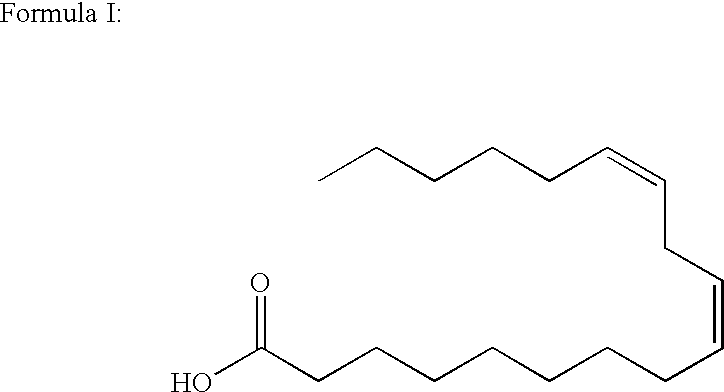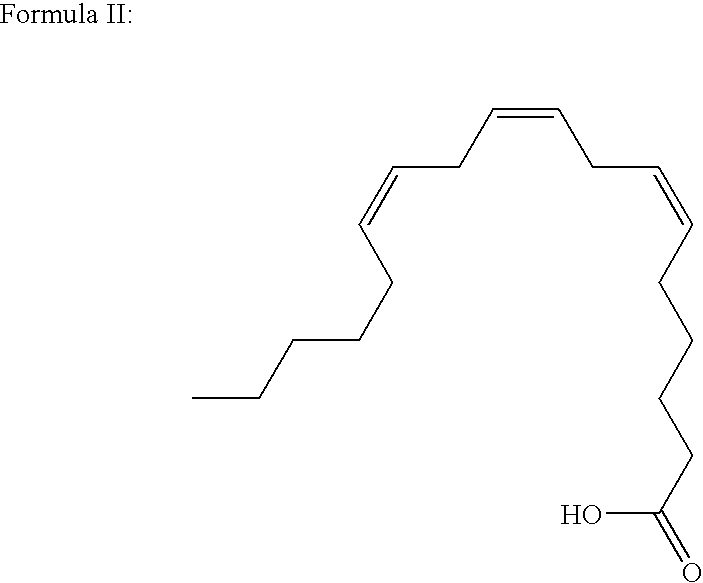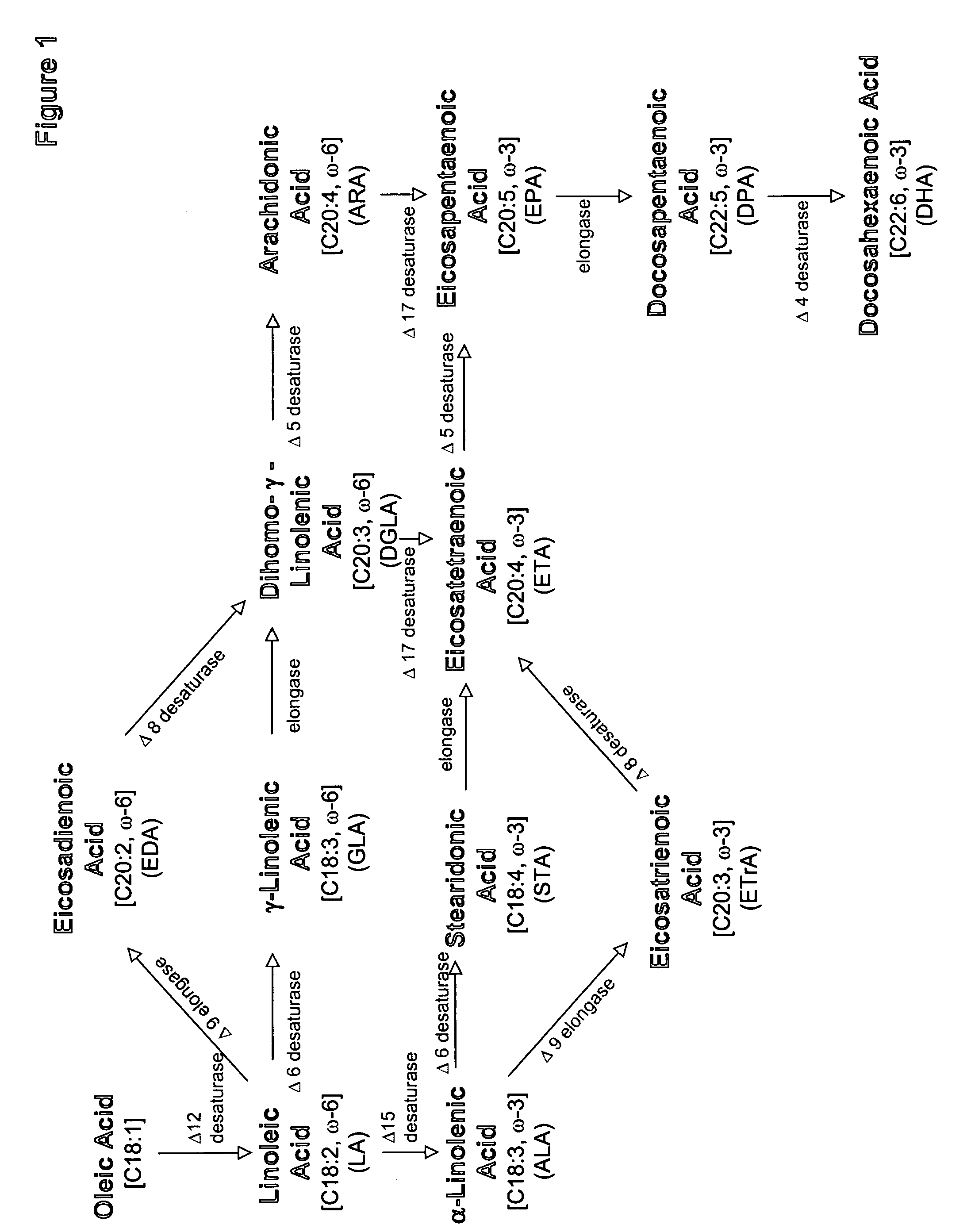Production of gamma-linolenic acid in oleaginous yeast
a technology of gamma-linolenic acid and oleaginous yeast, which is applied in the field of biotechnology, can solve the problems of uncontrollable fluctuations in availability of natural sources, high heterogeneous oil composition of plant oils, and inability to compete economically with crops producing pufas
- Summary
- Abstract
- Description
- Claims
- Application Information
AI Technical Summary
Problems solved by technology
Method used
Image
Examples
example 1
Construction of a Zeta Integration Plasmid
[0176] Plasmid pYZ2A (FIG. 2) was constructed as a derivative of pYZV5 to facilitate integration of the plasmid into the zeta regions of the Yarrowia lipolytica genome. Briefly, pYZV5 (WO2004 / 101757, Example 4) comprised the following: (1) an ampicillin-resistance gene (AmpR); (2) 401 bp of 5′-sequence and 568 bp of 3′-sequence from the Y. lipolytica URA3 gene to direct integration of expression cassettes into the Ura loci of the Yarrowia genome; (3) a Yarrowia isopropylmalate isomerase (LEU2) gene; (4) the Y. lipolytica translation elongation factor EF1-α (TEF) protein promoter (U.S. Pat. No. 6,265,185); (5) a Mortierella alpina (GenBank Accession #AF067654; U.S. Pat. No. 6,075,183) Δ5 desaturase; and (6) the extracellular protease gene terminator (XPR). Plasmid pYZ2A was constructed by substituting fragments of the zeta region for the fragments directing integration into the URA3 gene of the pYZV5 construct.
[0177] Specifically, genomic D...
example 2
Construction pf a High GLA Producing Plasmid, pDMW208, Comprising a Δ6 Desaturase and a Δ12 Desaturase
[0182] In order to produce high levels of GLA, a variety of modifications to plasmid pYZ2A (from Example 1) were engineered. Specifically, this Example describes the insertion of a synthetic Δ6 desaturase gene (responsible for conversion of LA to GLA) and a native Δ12 desaturase gene (responsible for conversion of oleic acid to LA) to ultimately produce plasmid pDMW208. The latter enzymatic activity was utilized to increase the carbon flux through the GLA biosynthetic pathway; the former activity was required for the synthesis of the desired product, GLA.
Cloning of a Synthetic Codon-Optimized Δ6 Desaturase
[0183] Plasmid pDMW200 was synthesized by cloning the Δ6 desaturase from pYD6S (described in WO2004 / 101753 and illustrated herein as FIG. 3A; Δ6 desaturase gene labeled as “D6Syn”) into Not1- and Nco1-digested pYZ2A (Example 1). Specifically, pYD6S contains a synthetic DNA frag...
example 3
Construction of a High GLA Producinq Plasmid, pDMW208D62, Comprising Two Δ6 Desaturases and Two Δ12 Desaturases
[0188] As is well known in the art, gene expression can frequently be increased by amplifying the number of copies of the cloned gene(s). To test this hypothesis and possibly up-regulate GLA production with respect to that obtainable by expression of pDMW208 (Example 2), this Example describes the insertion of a second Δ6 desaturase gene and a second Δ12 desaturase gene into pDMW208 to produce plasmid pDMW208D62.
Cloning of a Saprolegnia diclina Δ6 Desaturase
[0189] An additional copy of a Δ6 desaturase gene cloned under control of the TEF promoter and the OCT terminator was cloned into plasmid pDMW208. First, the 1366 bp S. diclina Δ6 desaturase gene was amplified using plasmid pRSP1 (Abbott Laboratories, U.S. Pat. No. 6,635,451; GenBank Accession No. AX576988) as the template and oligonucleotides YL253 (SEQ ID NO:18) and YL254 (SEQ ID NO:19) as primers. PCR amplificatio...
PUM
| Property | Measurement | Unit |
|---|---|---|
| pH | aaaaa | aaaaa |
| pH | aaaaa | aaaaa |
| pH | aaaaa | aaaaa |
Abstract
Description
Claims
Application Information
 Login to View More
Login to View More - R&D
- Intellectual Property
- Life Sciences
- Materials
- Tech Scout
- Unparalleled Data Quality
- Higher Quality Content
- 60% Fewer Hallucinations
Browse by: Latest US Patents, China's latest patents, Technical Efficacy Thesaurus, Application Domain, Technology Topic, Popular Technical Reports.
© 2025 PatSnap. All rights reserved.Legal|Privacy policy|Modern Slavery Act Transparency Statement|Sitemap|About US| Contact US: help@patsnap.com



